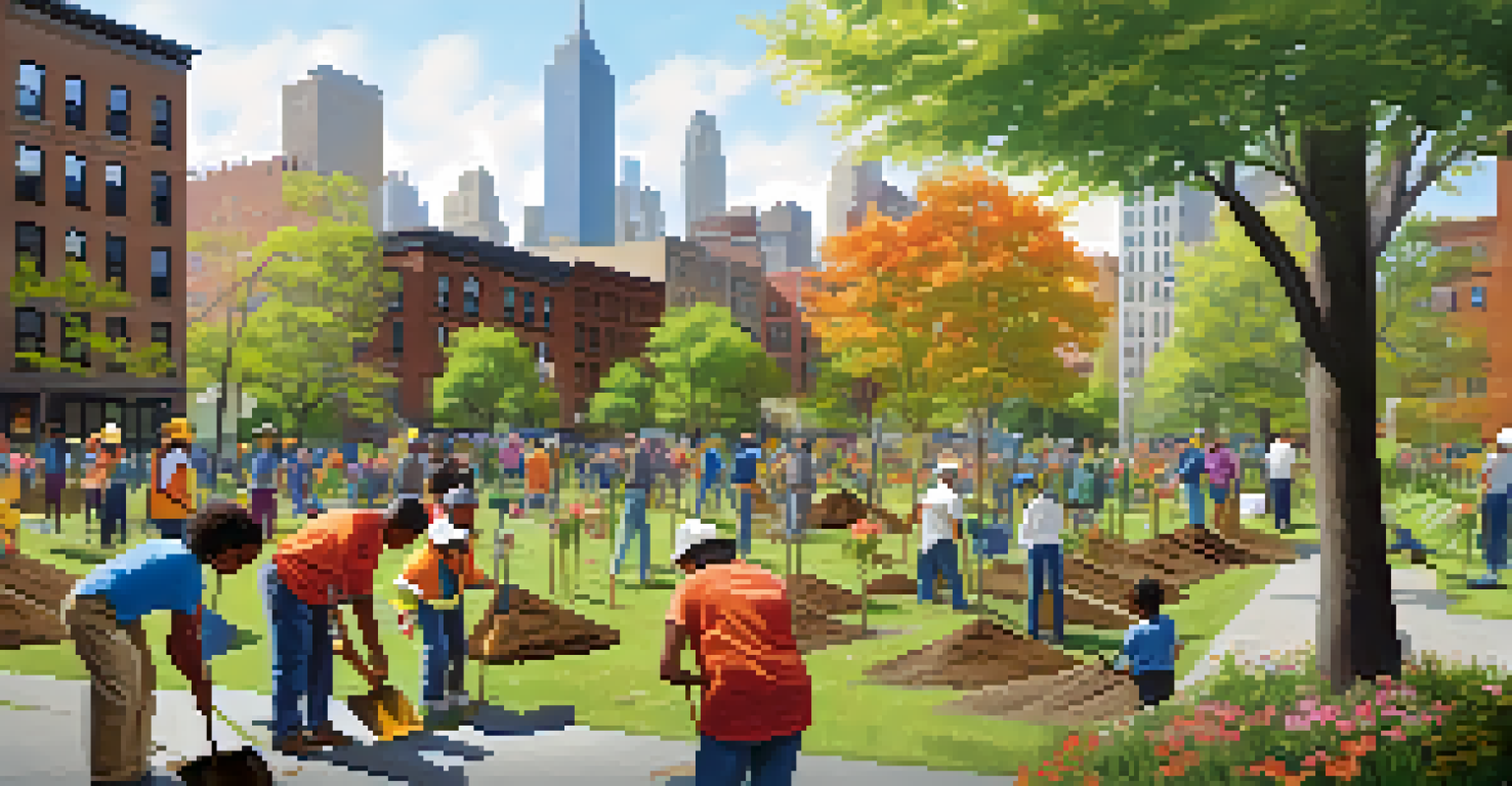Air Quality and Aging Infrastructure: A NYC Perspective

Understanding Air Quality in New York City
Air quality in New York City is a pressing concern, often influenced by various factors such as traffic, industrial activities, and weather patterns. The city's dense population contributes to higher emissions, which can lead to health issues among residents. To grasp the significance of air quality, it’s essential to recognize how pollutants like particulate matter and nitrogen dioxide can affect daily life.
The air we breathe is vital to our health and well-being; it’s not just a resource, it’s a part of our everyday lives.
Moreover, the city consistently monitors air quality through a network of sensors, providing real-time data that informs residents about pollution levels. For instance, on particularly smoggy days, you may notice advisories recommending outdoor activities be limited. This is not just a statistic; it reflects the real-world implications of living in a bustling metropolis.
Understanding the current state of air quality in NYC is a vital step toward addressing the challenges posed by aging infrastructure. As the city evolves, so too must our strategies to ensure cleaner air for all its inhabitants.
The Role of Aging Infrastructure in Air Quality
Aging infrastructure, including roads, bridges, and public transit systems, is a significant factor in worsening air quality. Many of these structures were built decades ago and have not kept pace with modern environmental standards. As they deteriorate, they can release harmful particles into the air, compounding the pollution problem.

For example, crumbling roads can create more dust and emissions from vehicles, while outdated heating systems in buildings may release additional pollutants. The relationship between infrastructure and air quality is a complex one, where neglect can lead to dire consequences for public health.
Air Quality Affects Public Health
Poor air quality in NYC leads to serious health issues, particularly for vulnerable populations like children and the elderly.
Addressing these infrastructure issues is critical for improving air quality in NYC. It requires a concerted effort from city planners, engineers, and policymakers to prioritize upgrades that not only enhance safety but also promote cleaner air.
Health Impacts of Poor Air Quality
Poor air quality can have serious health implications, particularly for vulnerable populations such as the elderly and children. Exposure to pollutants can lead to respiratory issues, cardiovascular problems, and even cognitive decline. In a city like New York, where millions reside in close quarters, these health risks become ever more pronounced.
Investing in clean air is not just an environmental necessity; it is a fundamental investment in public health and economic stability.
Consider the case of asthma, a condition that disproportionately affects urban residents. Poor air quality exacerbates asthma symptoms, leading to increased hospital visits and missed school days for children. This creates a cycle where health issues further strain the healthcare system and impact quality of life.
The effects of poor air quality extend beyond individual health; they also impose significant economic costs on the city. By investing in infrastructure improvements, NYC can mitigate these health risks and foster a healthier environment for all.
Community Initiatives for Cleaner Air
Various community initiatives have emerged in NYC aimed at tackling air quality issues head-on. For instance, local groups often organize tree planting events, which not only beautify neighborhoods but also help absorb air pollutants. These grassroots efforts demonstrate how communities can come together to make a tangible difference in their environment.
Additionally, awareness campaigns educate residents about the importance of reducing vehicle emissions. Programs encouraging public transportation use, cycling, and walking contribute to lowering the overall pollution levels in the city. By fostering a culture of sustainability, communities can actively participate in improving air quality.
Aging Infrastructure Worsens Pollution
Deteriorating infrastructure contributes to air pollution, necessitating urgent upgrades to improve air quality.
These initiatives highlight the power of collective action in addressing urban challenges. When residents take pride in their neighborhoods and advocate for cleaner air, they contribute to a healthier city for everyone.
The Role of Technology in Monitoring Air Quality
Technology plays a crucial role in monitoring air quality in New York City. Advances in sensor technology allow for real-time data collection, helping residents stay informed about pollution levels. These devices can be found in various locations across the city, providing valuable insights into air quality trends.
For example, mobile apps can alert users when air quality drops below safe levels, prompting them to take necessary precautions. This proactive approach empowers individuals to make informed choices about their outdoor activities and overall health. Technology not only enhances awareness but also fosters a sense of community responsibility.
Furthermore, data collected from these technologies can inform policy decisions and infrastructure improvements. By leveraging technology, NYC can better address the air quality challenges posed by aging infrastructure and work towards a cleaner, healthier future.
Government Policies and Infrastructure Investment
Government policies play a pivotal role in shaping the landscape of air quality and infrastructure in NYC. Initiatives aimed at reducing emissions, such as stricter vehicle regulations, directly impact air quality. Additionally, investments in public transportation and green infrastructure can significantly reduce the reliance on fossil fuels.
The city's commitment to sustainable development is reflected in plans to upgrade aging infrastructure, such as replacing old heating systems with energy-efficient alternatives. Such investments not only improve air quality but also contribute to the city’s resilience against climate change.
Community Initiatives Make Impact
Local efforts, such as tree planting and awareness campaigns, demonstrate how communities can actively improve air quality.
However, for these policies to be effective, they must be backed by adequate funding and community support. Collaborative efforts between government agencies, businesses, and residents are essential to ensure that infrastructure improvements translate into cleaner air for all New Yorkers.
A Vision for a Cleaner NYC
Looking ahead, a cleaner New York City is an achievable goal with concerted effort and innovative thinking. By prioritizing infrastructure upgrades and investing in green technologies, the city can significantly improve air quality. This vision not only enhances public health but also contributes to the overall quality of life for residents.
Engaging the community in conversations about air quality is vital for fostering awareness and driving action. When residents understand the connection between infrastructure and air quality, they become more invested in advocating for change. This grassroots involvement can lead to more effective policies and initiatives.

Ultimately, a cleaner NYC is a shared responsibility. By working together—government, communities, and individuals—we can ensure a healthier environment for the generations to come.